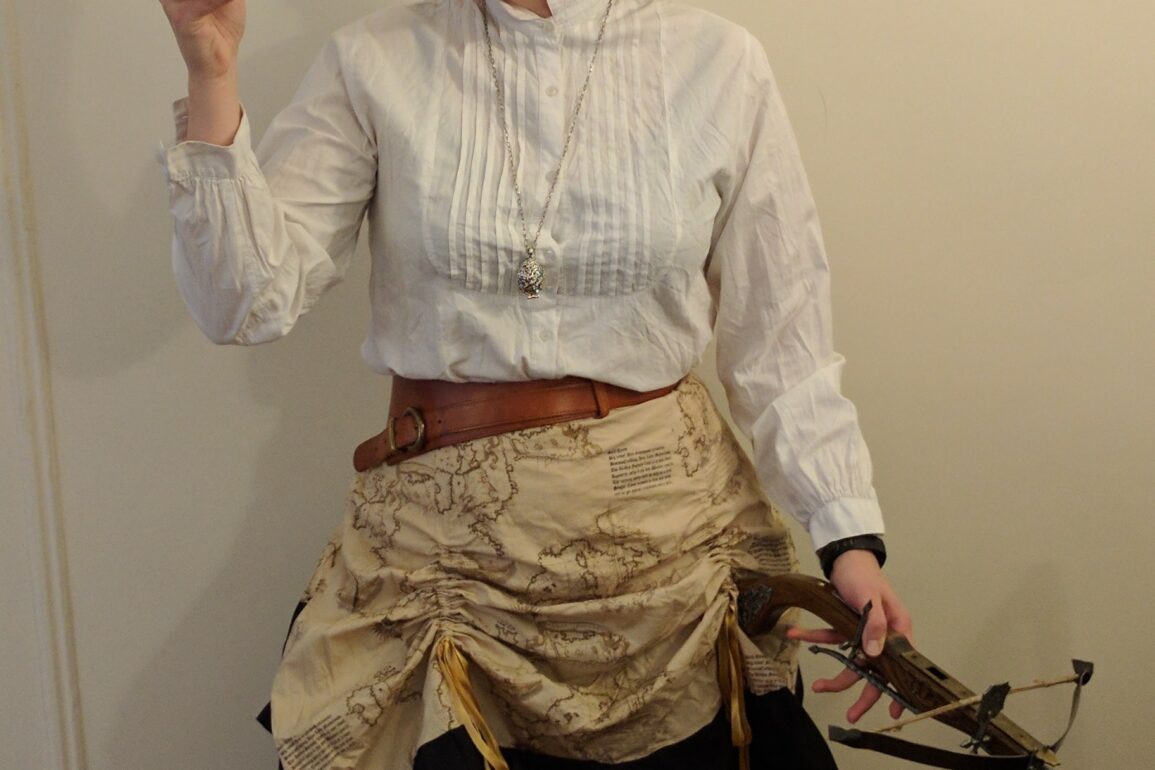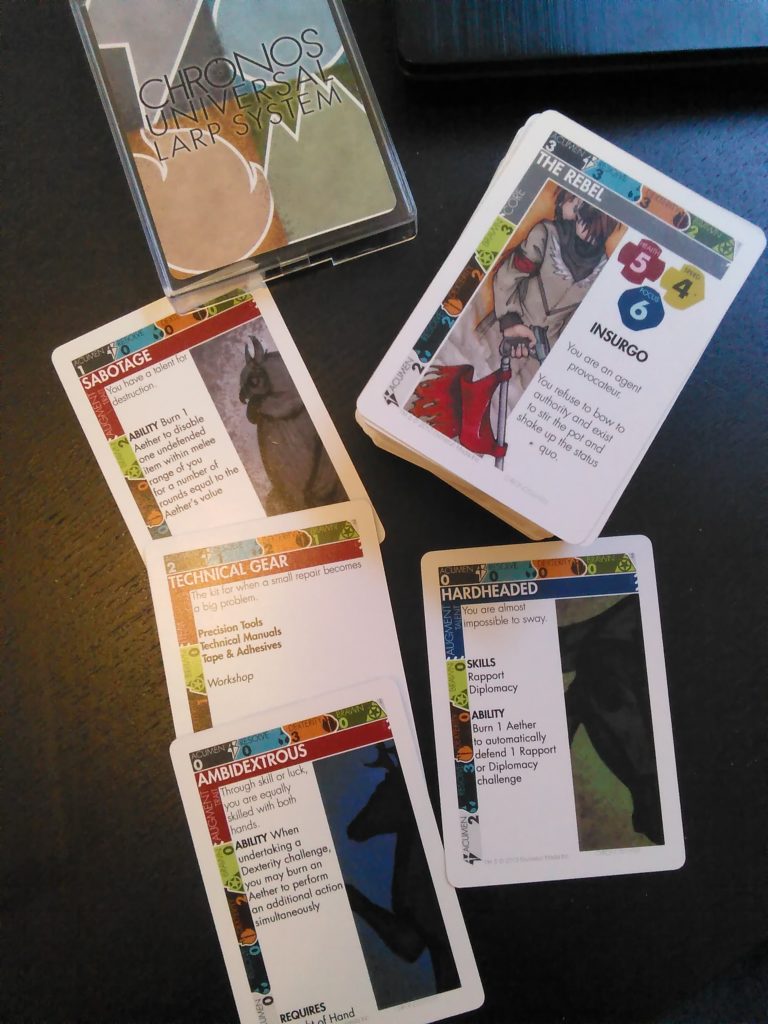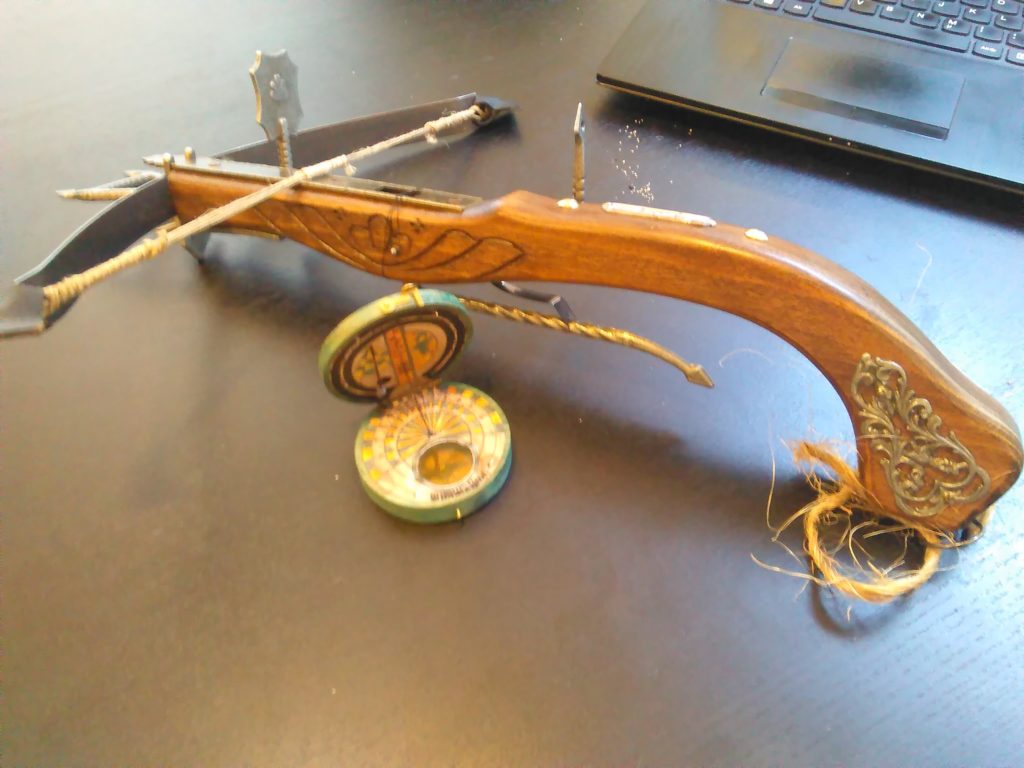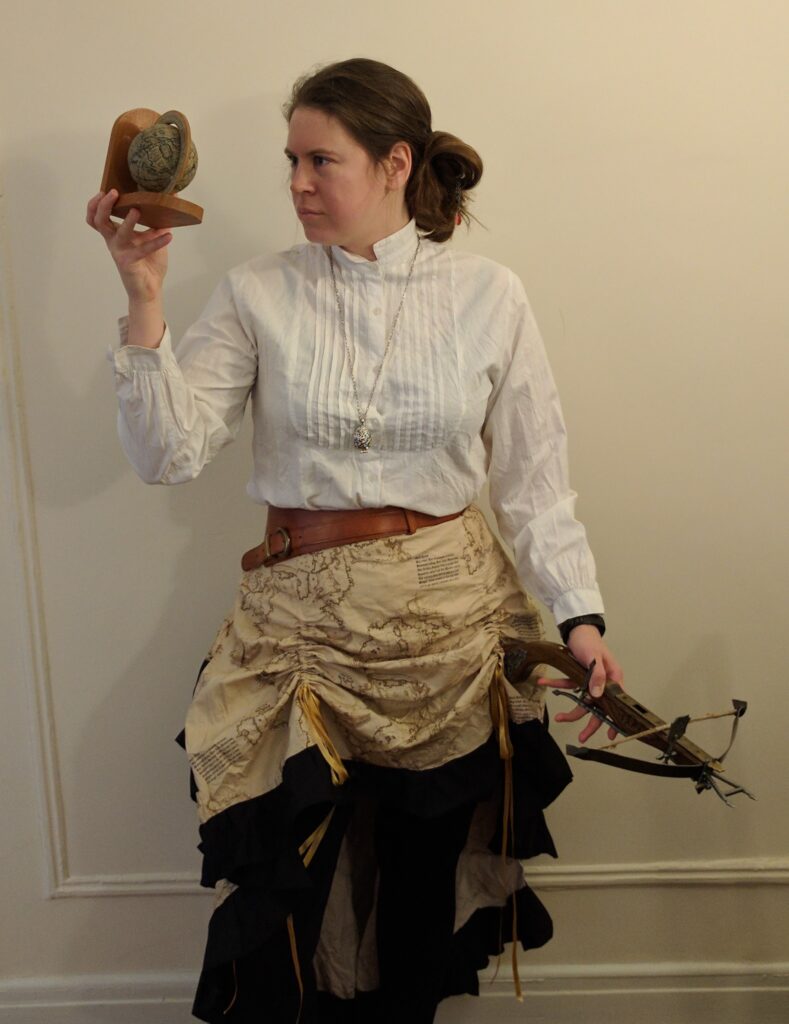(This is an english translation of a swedish article, written with a target audience of larpers from the Nordic countries in mind.)
“Alright, any questions about the combat rules?
Ok, then the larp starts now!”,
says the organizer suddenly.
And then it just does.
The out of game (OOG) reception desk is still standing in a corner with laptops and piles of character sheet cards (more on those later). Some larpers sit and talk out of character (OOC) by a table about their cards. The rest of the room, however, immediately and without a second thought throw themselves into the larp: they are now no longer larpers in the basement of The Lovecraft – an appropriately decorated bar in Alphabet City, New York. Instead, they are magicians and magical creatures in the House of the Strange Aeon in the urban fantasy larp world of Ex Arcana.
This very sudden larp start was one of many new and fascinating experiences for me, as a Nordic larper who has never attended an American larp before. Since the organizers had said that I was to arrive in game (IG), I panicked a bit, grabbed all my stuff and my half-eaten dinner and hurried through the room. Was I breaking the others’ immersion by being in the wrong place? What was even the OOG sign here? (Answer: a fist held by your head) I found some OOG refuge in the organizers’ corner and sat and just observed the larp for a few minutes.
American larps and Nordic larps are, of course, basically very similar: they concern themselves, fundamentally, with issues of living stories, of a desire to have and to give others new experiences, both emotional and otherwise. There’s a penchant for experiencing a sense of wonder.
The most noticeable differences between the larp cultures, at least when Ex Arcana is compared with equivalent Nordic larps of similar theme and length, are:
- More blurred lines between OOG and IG, and that state that Swedes call “iff” (half in game, half out of game). In larps in the Nordic countries, “iff” is generally derided as a bad state which should be avoided.
- The sheer amount of organizer-initiated events (“inspel” in Swedish)
- A tighter focus on experiences and adventures more than character immersion and the narrative arc (but not exclusively)
- The use of character sheet cards (and the corresponding stats)
The theme of Ex Arcana is urban fantasy. It takes place in an alternate 2017 where magic has suddenly returned to the world after a century of “Silence”. Many of the participants play new, modern magicians who’ve just found out that they have powers: they happily mix alchemy and iphones, frankensteinian electronics and biochemistry. Others (including me) play Magisters from a steampunky 19th century who have just been awoken from their 100 years of sleeping-beauty-rest – they’re desperately trying to understand the new world they’ve woken up in. Together these people try to (mostly) save the world from all manner of bad magic nasty stuff through solving mysteries and riddles and fighting monsters (this might or might not include each other).
The organizers supply a steady stream of happenings in the form of Non player characters (NPCs) who arrive with agendas or letters or similar. Someone is missing? Maybe if a few seers and mediums try to collaborate they can devise a ritual that can find her? In another corner some people try to exorcise a mysterious medallion that has appeared in the room. Elsewhere a man is accused of violating the magical oaths and angry arguments swirl around him. Eventually the whole larp is focused on his trial – does he deserve to die?
The sheer amount of things happening are about 300% of what I would have expected at a similar Nordic larp. […] In this American larp the participants are more consumers than producers
Overall, it is loud, overwhelming and a lot of fun. The sheer amount of things happening are about 300% of what I would have expected at a similar Nordic larp. There, a few carefully determined events might be set in motion by the organizers, but then it would have been up to the larpers themselves to react to this and create new larp content from them: it’s everyone’s responsibility to be producers and directors of the narrative. In this American larp the participants are more consumers than producers (though not, of course, exclusively – but that’s the overall feel). It’s hard to find the time in Ex Arcana to improvise new lines of action and new facets of relationships because the world is constantly ending around you. A lot of narrative balls are dropped because there simply isn’t time to do anything about them. One upside of this is that it’s almost impossible to get stuck in a boring intrigue or event – the downside is that it’s a bit harder to have time for emotional and genuine character development and talks with others. The focus is on what the roles can do, not who they are or who they might become or what their backstories are.
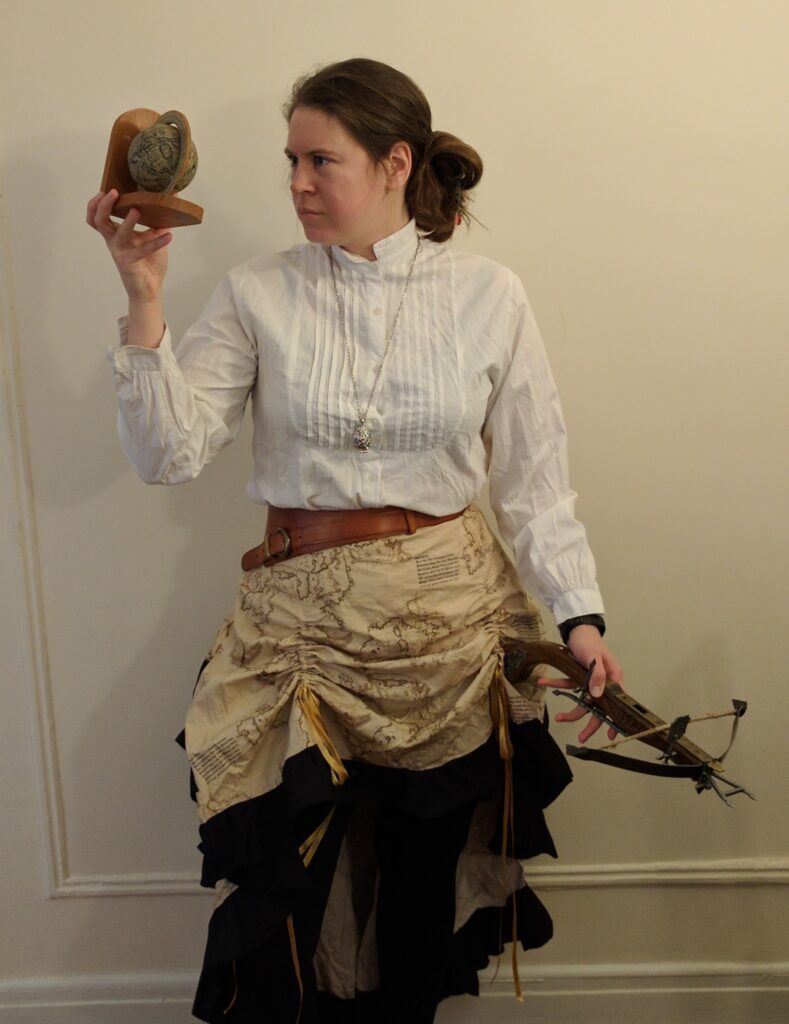
This prevalence for action and adventure also means that some Nordic larp techniques are less essential here: as Nordic larpers we learn (through the workshops before the larp and through the larps themselves) how to spread and activate larp content, and that it is your responsibility to do so. A Nordic larper is taught how to lift up others’ performance, that this is expected of you, and that you should devote time and effort to deepen the emotional experience of other players. If you see a fellow player almost crying then your out of character responsibility is to make that person cry. Your character, now, might try to comfort them, but you as a player will manipulate what your character says to deepen their despair. Josefin Westborg and Carl Nordblom have written a very nice Knutpunkt book chapter (“Do you Want To Play Ball?”) that spells out the classical techniques – catch the narrative ball, pass it one etc. It’s downloadable here.
I used the classical Nordic techniques in Ex Arcana with very positive results. After the game I got a several very kind comments from a number of people who said that I’d given them a very strong emotional experience – the best in a long while, the best ever. I think this was simply because I took the time, as I’ve been taught, to get a read on my fellow players and make some educated guesses about where their emotional and narrative arcs could be heading – and then I pushed them there. I pulled people away from the ongoing stream of action, focused on their backstories and asked them personal questions and challenged their beliefs.
A Nordic urban fantasy larp might suffer from problems of having people get stuck in dark corners having long never-ending emotional discussions – it can get stagnant and static. That’s never ever going to be a problem in Ex Arcana.
I’m glad that the Nordic techniques worked well in Ex Arcana – but, of course, if everyone did what I did, the number of adventures would be fewer, so please don’t see this as claiming that the Nordic way is the only way or the best way of the many different larp styles. Ex Arcana and other similar American larps have a different focus and vision, it’s as simple as that. A Nordic urban fantasy larp might suffer from problems of having people get stuck in dark corners having long never-ending emotional discussions – it can get stagnant and static. That’s never ever going to be a problem in Ex Arcana.
There were also so many talented and responsive character-focused players in Ex Arcana and it was a privilege to play with them and it gave me some truly stellar emotional scenes. See my comments as reflections on the overall focus of the different larp styles, nothing more.
When it comes to the OOG/IG shifts that I found so jarring, and the hazy half IG and half OOG state that I find confusing, they’re an integral part of the larp style here. In the middle of an in game conversation about magical theory, one of my fellow players suddenly grabbed a meta character (that means a character played by an organizer), raises his hand in the OOG sign (the fist) and asks directly “can I use my skill X to do Y here?” There’s a short OOG discussion (carried out in the middle of the room, no one bats an eye at this) and the organizer is very obliging and focused on creating a good scene. The two of them look at the stat cards together for a while and the organizer makes a ruling. The player “pays” with some mana (cards are placed in a bowl in the center of the room) and then the rest of us play on the fact that the magic happened.
I think that a lot of the time when organizers and cards are brought up and used, we could have simply improvised the scene with the same or better results. But there are advantages to having stats in larps too – your character can do things that you would have a hard time acting out convincingly (turn into a gigantic bear! Pickpocket someone!)
The Nordic larp style has a lot of what is called WYSIWYG – what you see is what you get. You wanna play an intimidating brute? Go build some cool armor! You wanna be charistmatic leader? Go take a course in public speaking! Your fellow players will lift you up (bejaka, spela upp, in Swedish) and strengthen your performance, just as you will strengthen theirs – but you do have to make a believable effort to act out the scene convincingly first. This is an amazing experience, especially having your performance enhanced and lifted up by everyone else in a larp. But for someone who doesn’t have the resources (be they OOG money or time or charisma) to enact the basics, just having stats is a great alternative. You don’t need to give that amazing speech – you can just show a card that shows that you just did and then we move on.
In addition to this, you can solve puzzles and riddles and mysteries in real time in a more exhilarating manner. I got pulled into a ritual / operation done on a mysterious NPC who seemed to be made up of many different people (think Frankensteinian engineering). Some people wanted to open his brain up and find out who made him and who he was. We collected a medium, an elvish healer, a former spaceship in human form (urban fantasy, remember?) and me (mad engineer). We used our character sheet cards and managed, finally, to find the right combination of cards and ideas to figure out what was happening! That was fun! A Nordic style version of the same scene would not have given us the same opportunities for active problem solving (but would have been a more profound emotional experience).
Alright, so I’ve mentioned these character stats cards several times now. For some (most?) larps, Americans like to have characters stats – numbers that represent how good characters are at doing something. In Ex Arcana, we use cards from the CHRONOS Universal Larp System. The system has decks of cards for the larpers which we use to build our characters. There are also other decks for organizers that make it easy to create lots of events in game – the organizer cards have stats for monsters and so on. You can buy the Chronos system, and the Ex Arcana system/world from DriveThru RPG – another strange thing for me, that the systems are commercial. But very practical.
The players carry around about 15 cards each. Each of these has four different attack and defense values. There are also cards for items and skills. During battle, you enter “Chronos time”, which means that everyone involved decide which cards they want to use the first round, and then the first round is acted out in slow motion. Then the next round starts. It’s not explicitly play to lose – but there is a very generous feel that encourages people to create good scenes. It does seem very complicated and I’m glad I didn’t end up in combat during my first time in Ex Arcana.
You decide which cards to use to build your character together with an organizer. I found the Ex Arcana organizers to be very responsive and fully dedicated to giving their players the best experience they could have. Everyone should have fun, and have as exciting and powerful characters as the system will let them have. I brought some props for my mad engineer and they immediately found ways to “yes, and” them: “Ah! This crossbow is not only a crossbow, it is also a tesla fork!” they said when they saw my crossbow. “And this compass – it’s obviously a device to find water elemental magic!” they continued enthusiastically and gave me two cards for my deck: “Tesla fork” and “Dowsing rod”.
I had a lot of fun at Ex Arcana and I recommend other Nordic larpers to try American larps as well. I’m going to keep attending Ex Arcana larps – they seem to happen every one or two months. It’s important to have an open mind and realize that some elements in the larp might be more reminiscent of tabletop roleplaying and computer games than the Nordic larps that you are used to. But all American larpers that I have met are very responsive, curious and good role players – if we just follow their example, I think the larp styles can greatly enrich each other.
***
Susanne Vejdemo is a Swedish larpwright, larp producer and larper who has recently moved to New York.

